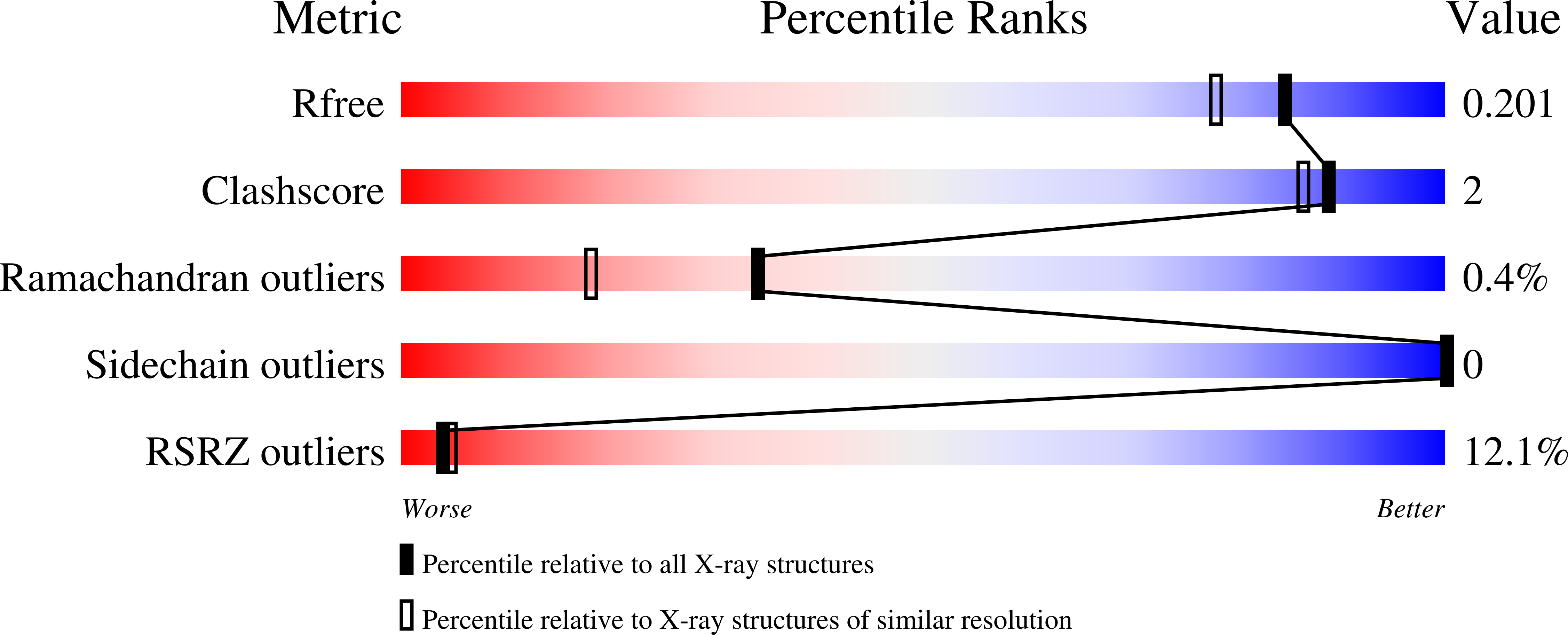Influence of Naturally-Occurring 5'-Pyrophosphate-Linked Substituents on the Binding of Adenylic Inhibitors to Ribonuclease A: An X-Ray Crystallographic Study.
Holloway, D.E., Chavali, G.B., Leonidas, D.D., Baker, M.D., Acharya, K.R.(2009) Biopolymers 91: 995
- PubMed: 19191310
- DOI: https://doi.org/10.1002/bip.21158
- Primary Citation of Related Structures:
2W5G, 2W5I, 2W5K, 2W5L, 2W5M - PubMed Abstract:
Ribonuclease A is the archetype of a functionally diverse superfamily of vertebrate-specific ribonucleases. Inhibitors of its action have potential use in the elucidation of the in vivo roles of these enzymes and in the treatment of pathologies associated therewith. Derivatives of adenosine 5'-pyrophosphate are the most potent nucleotide-based inhibitors known. Here, we use X-ray crystallography to visualize the binding of four naturally-occurring derivatives that contain 5'-pyrophosphate-linked extensions. 5'-ATP binds with the adenine occupying the B(2) subsite in the manner of an RNA substrate but with the gamma-phosphate at the P(1) subsite. Diadenosine triphosphate (Ap(3)A) binds with the adenine in syn conformation, the beta-phosphate as the principal P(1) subsite ligand and without order beyond the gamma-phosphate. NADPH and NADP(+) bind with the adenine stacked against an alternative rotamer of His119, the 2'-phosphate at the P(1) subsite, and without order beyond the 5'-alpha-phosphate. We also present the structure of the complex formed with pyrophosphate ion. The structural data enable existing kinetic data on the binding of these compounds to a variety of ribonucleases to be rationalized and suggest that as the complexity of the 5'-linked extension increases, the need to avoid unfavorable contacts places limitations on the number of possible binding modes.
Organizational Affiliation:
Department of Biology and Biochemistry, University of Bath, Claverton Down, Bath BA2 7AY, UK.















